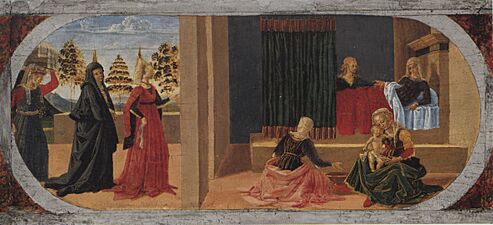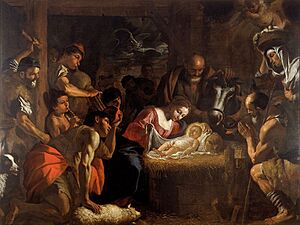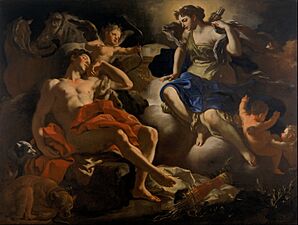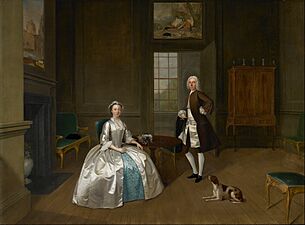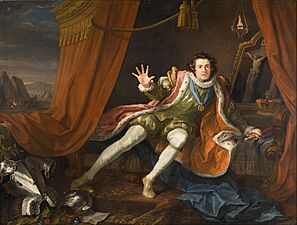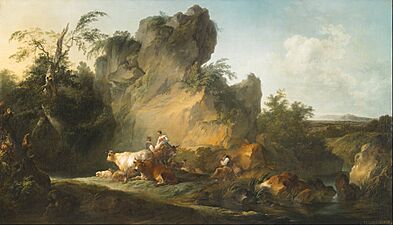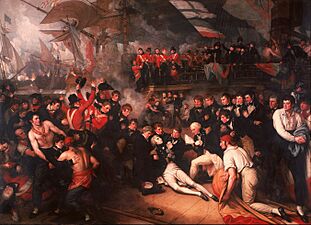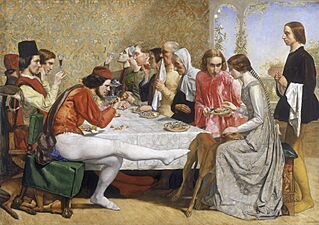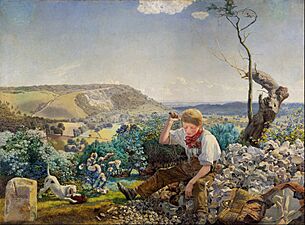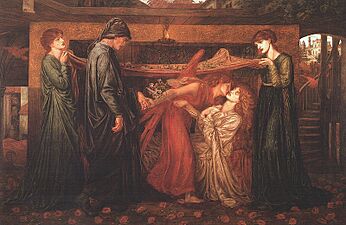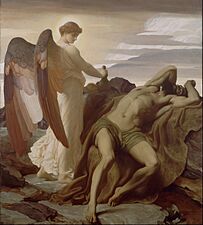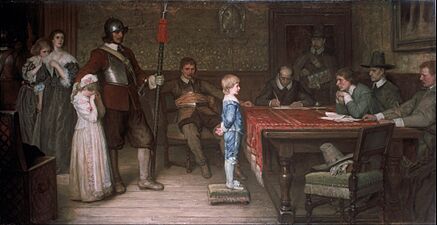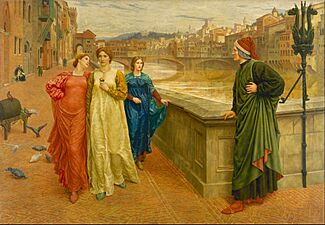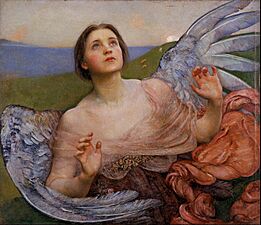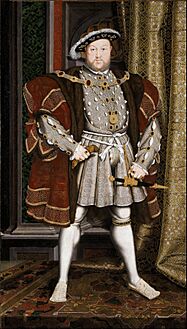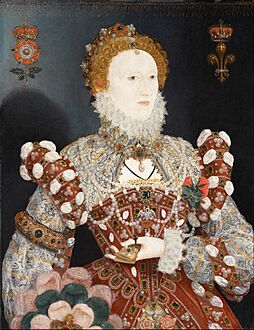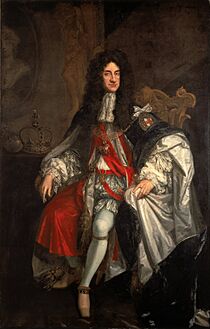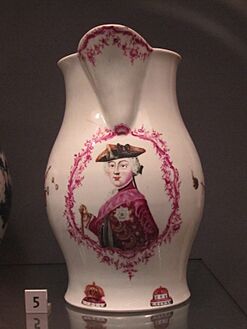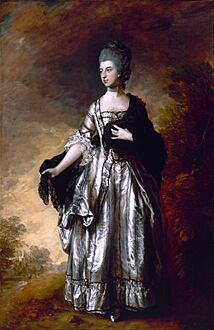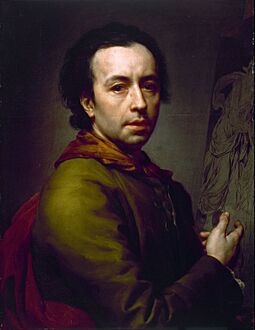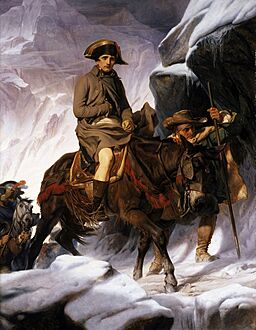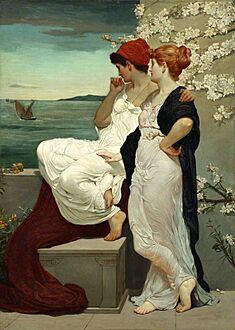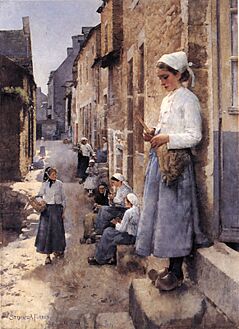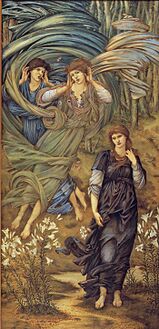Walker Art Gallery facts for kids
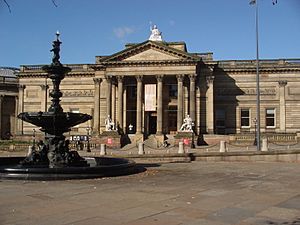
Walker Art Gallery
|
|
| Lua error in Module:Location_map at line 420: attempt to index field 'wikibase' (a nil value). | |
| Established | 1877 |
|---|---|
| Location | William Brown Street, Liverpool, England |
| Visitors | 391,765 (2019) |
| Founder | Sir Andrew Barclay Walker |
| Architect | Cornelius Sherlock & H. H. Vale |
| Public transit access | |
|
Listed Building – Grade II*
|
|
| Official name: Walker Art Gallery | |
| Designated: | 28 June 1952 |
| Reference #: | 1063782 |
The Walker Art Gallery is a famous art museum in Liverpool, England. It holds one of the biggest art collections in England, outside of London. This amazing gallery is part of the National Museums Liverpool group. It's a great place to explore art from many different times and places!
Contents
Discovering the Gallery's History
How the Collection Started
The story of the Walker Art Gallery's collection began a long time ago, in 1819. The Liverpool Royal Institution bought 37 paintings from a man named William Roscoe. He had to sell his art because his banking business had problems. Luckily, his friends helped save the collection from being split up.
In 1843, these paintings were shown in a special gallery next to the Royal Institution. Over the years, the collection grew bigger and bigger.
A New Home for Art
In 1860, the William Brown Library and Museum opened. It was named after a generous Liverpool merchant. This new building allowed the city to create a public library, museum, and art gallery.
Then, in 1871, the city held its first "Liverpool Autumn Exhibition." This show was a big success! It helped the council buy even more art for its permanent collection. Famous paintings like And when did you last see your father? and Dante's Dream were bought during this time.
Opening the Walker Art Gallery
The Walker Art Gallery officially opened its doors on September 6, 1877. It was designed by local architects Cornelius Sherlock and H. H. Vale. The gallery is named after its founder, Sir Andrew Barclay Walker. He was a wealthy brewer and a former mayor of Liverpool.
In 1893, the Liverpool Royal Institution loaned its collection to the gallery for a long time. Later, in 1948, they gave William Roscoe's collection and other artworks to the gallery permanently.
Changes Over Time
During World War II, the gallery closed, and its art was moved to safe places. It reopened in 1951. The gallery also had extensions added in 1884 and 1933. After a big update, it reopened in 2002, looking better than ever!
In 1986, the Walker Art Gallery became a national gallery. This meant it was recognized as a very important part of the country's art and culture.
Where to Find It
The gallery is in a beautiful building on William Brown Street. This area is full of interesting places! Nearby, you can find the World Museum Liverpool, St George's Hall, and Lime Street Station. Another major art gallery in Liverpool is Tate Liverpool, which focuses on modern art.
- Gallery Rooms
Exploring the Permanent Collection
The Walker Art Gallery has an amazing collection of art from different periods.
- It includes Italian and Dutch paintings from the 1300s to the 1550s.
- You can see European art from 1550 to 1900, with works by famous artists like Rembrandt and Degas.
- There's also a large collection of British art from the 1700s and 1800s. This includes many Victorian and Pre-Raphaelite artworks.
- The gallery also has lots of prints, drawings, and watercolors.
- You can find 20th-century art by artists such as Lucian Freud and David Hockney.
- There's a big collection of sculptures too!
- The gallery even has the only original painting by Stuart Sutcliffe (a former member of The Beatles) on permanent display in Liverpool.
Unique Artworks to See
On December 17, 2011, a very special artwork joined the collection. It was a statue of a priest that had been changed by the famous graffiti artist Banksy. Banksy cut off the face of an old stone bust and replaced it with bathroom tiles. This "pixellated" portrait is called Cardinal Sin. It is thought to be a comment on serious issues in the Church. You can find this interesting piece in Room three.
Another important sculpture, La Masseuse by Edgar Degas, found its permanent home at the gallery on July 2, 2013. This artwork was donated through a special system that helps museums get valuable pieces.
Art Exhibitions and Prizes
The John Moores Painting Prize
Since 1957, the Walker Art Gallery has hosted the John Moores Painting Prize exhibition. This competition happens every two years. It was started by Sir John Moores, who founded the Littlewoods company. It is the biggest painting prize in the UK, celebrating new and exciting art!
Temporary Exhibitions
The gallery also has a regular schedule of temporary exhibitions. These shows feature different artists and themes throughout the year. For example, in 2004, the gallery held The Stuckists Punk Victorian. This was the first national museum exhibition for the Stuckist art movement. The gallery also takes part in the Liverpool Biennial, a large art festival in the city.
Gallery
-
Pietro Perugino
Nativity of the Virgin
c. 1472 -
Attributed to the Master of Frankfurt - Holy Family with Music Making Angels - Google Art Project.jpg
Holy Family with Music Making Angels
c. 1510–1520 -
Lucas Cranach the Elder - The Nymph of the Fountain - Google Art Project.jpg
Lucas Cranach the Elder
The Nymph of the Fountain
1534 -
William Dobson - The Executioner with the Head of John the Baptist - Google Art Project.jpg
William Dobson
The Executioner with the Head of John the Baptist
c. 1640 -
Nicolas Poussin
Landscape with the Ashes of Phocion
1648 -
Mattia Preti
Adoration of the Shepherds
c. 1675–1680 -
Francesco Solimena
Diana and Endymion
c. 1705–1710 -
Arthur Devis
Mr and Mrs Atherton
c. 1743 -
William Hogarth
David Garrick as Richard III
c. 1745 -
Philip James de Loutherbourg
Landscape with Figures and Animals
1763 -
Benjamin West
The Death of Nelson
1806 -
John Everett Millais
Isabella
1849 -
William Holman Hunt
The Scapegoat
1854 -
John Brett
The Stonebreaker
1857–1858 -
Dante Gabriel Rossetti
Dante's Dream
1871 -
Frederic Leighton
Elijah in the Wilderness
1877–1878 -
Henry Holiday
Dante and Beatrice
1882–1884 -
Albert Joseph Moore - A Summer Night - Google Art Project.jpg
Albert Joseph Moore
A Summer Night
c. 1887 -
Louis Edouard Fournier - The Funeral of Shelley - Google Art Project.jpg
Louis Edouard Fournier
The Funeral of Shelley
1889 -
Annie Swynnerton
The Sense of Sight
1895 -
John William Waterhouse - Echo and Narcissus - Google Art Project.jpg
John William Waterhouse
Echo and Narcissus
1903
-
After Hans Holbein the Younger
Portrait of Henry VIII
after 1537 -
Nicholas Hilliard
Pelican Portrait of Queen Elizabeth I
c. 1573–1575 -
Godfrey Kneller
King Charles II -
Peter Paul Rubens (studio of) - Meleager and Atalanta - Google Art Project.jpg
Peter Paul Rubens
Meleager and Atalanta
1635–1637 -
Thomas Gainsborough
Isabella, Viscountess Molyneux
1769 -
Anton Raphael Mengs
Self Portrait
1774 -
Paul Delaroche
Bonaparte Crossing the Alps
1850 -
Valentine Cameron Prinsep
Leonora of Mantua
1873 -
Stanhope Forbes
A Street in Brittany
1881 -
Frederic, Lord Leighton - Perseus and Andromeda - Google Art Project.jpg
Frederic Leighton
Perseus and Andromeda
1891 -
Edward Burne-Jones
Sponsa de Libano
1891
See also
 In Spanish: Galería de Arte Walker para niños
In Spanish: Galería de Arte Walker para niños
- Architecture of Liverpool
- Grade II* listed buildings in Liverpool – City Centre
- Liverpool Biennial
- The Stuckists Punk Victorian






